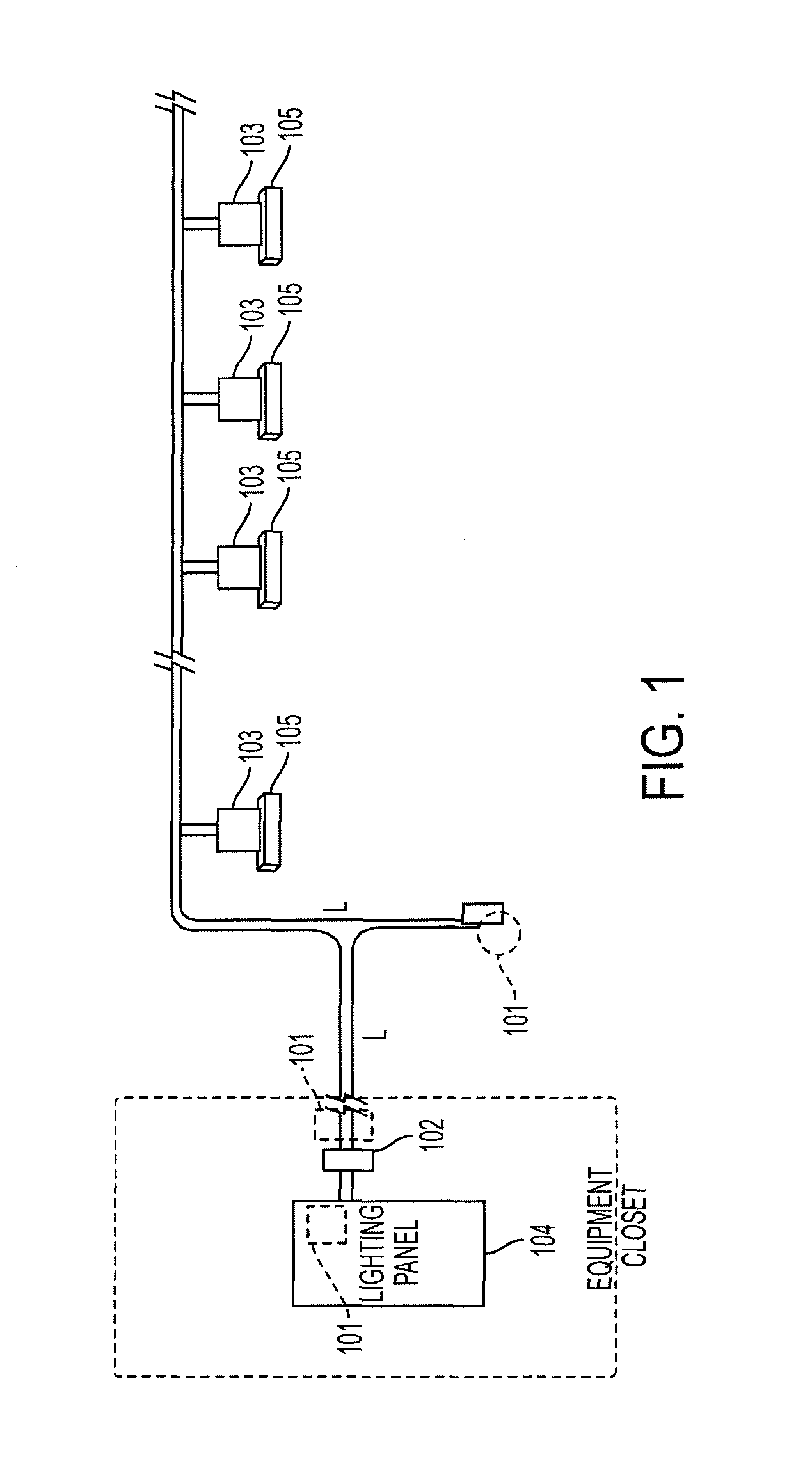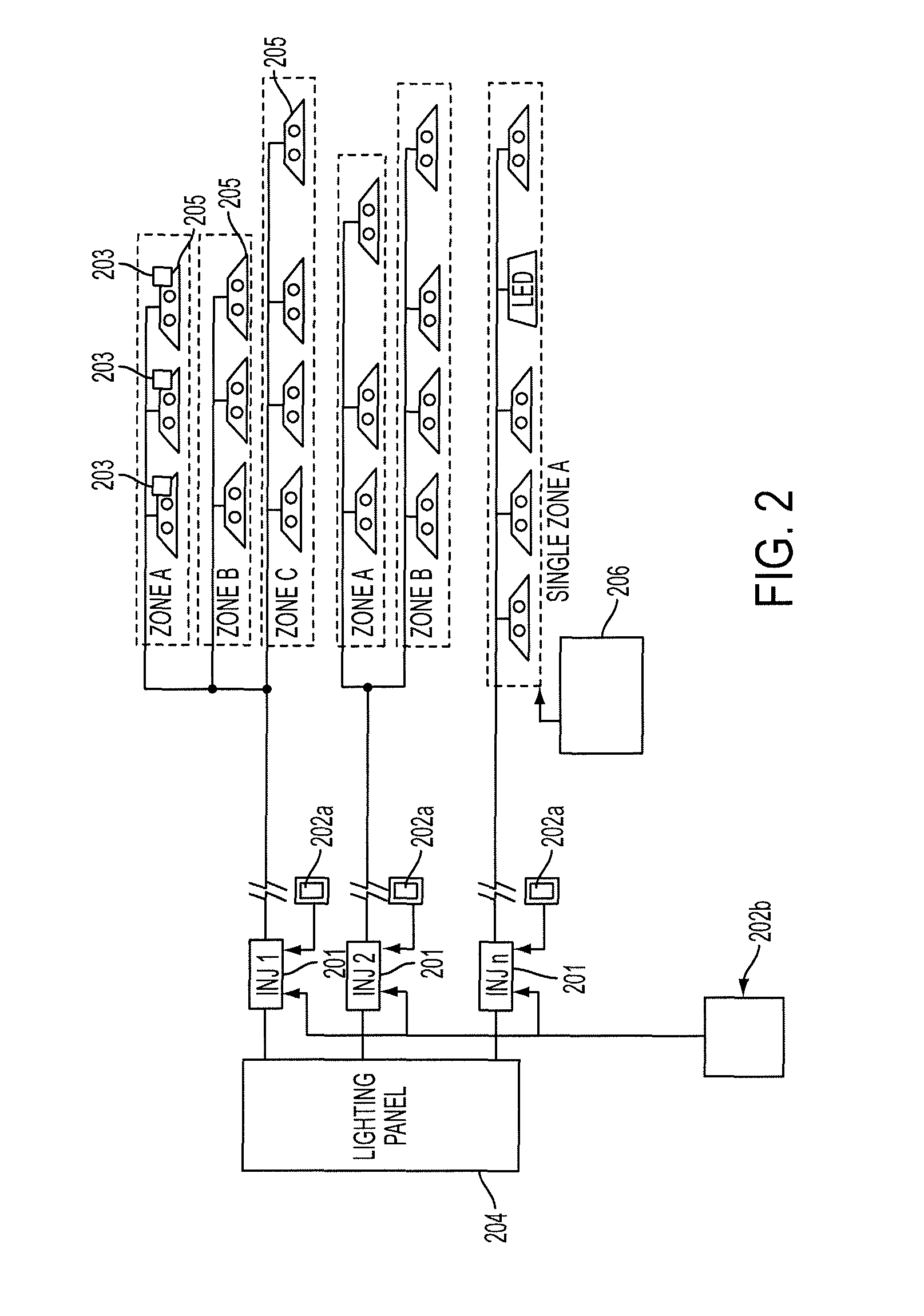Powerline communicated load control
a load control and powerline technology, applied in the field of communication of control signals, can solve the problems of time-consuming and costly addition of dedicated wiring for lighting control, and achieve the effects of reducing installation costs, simplifying the transition from conventional lighting to, and saving tim
- Summary
- Abstract
- Description
- Claims
- Application Information
AI Technical Summary
Benefits of technology
Problems solved by technology
Method used
Image
Examples
Embodiment Construction
[0030]The present invention provides a new system and method for communicating load control signals on existing branch power lines. Known systems for sending control signals over power lines employ the injection of carrier current signals having a frequency of 100 kHz and higher. These relatively high frequency signals are difficult to propagate over 50 or 60 Hz power lines with their associated loads. One aspect of the present invention is to utilize low-frequency supply voltage as a carrier frequency and then modulate the supply voltage signal in accordance with the information to be communicated. Although this approach provides a communication bandwidth of only a fraction of a cycle per second, such speed is adequate for the intended load management application. This technique is referred to as Power line Communicated Load Control (“PCLC”).
[0031]PCLC can be used for on / off control of incandescent, fluorescent, light emitting diode (“LED”), high intensity discharge (“HID”) and ind...
PUM
 Login to View More
Login to View More Abstract
Description
Claims
Application Information
 Login to View More
Login to View More - R&D
- Intellectual Property
- Life Sciences
- Materials
- Tech Scout
- Unparalleled Data Quality
- Higher Quality Content
- 60% Fewer Hallucinations
Browse by: Latest US Patents, China's latest patents, Technical Efficacy Thesaurus, Application Domain, Technology Topic, Popular Technical Reports.
© 2025 PatSnap. All rights reserved.Legal|Privacy policy|Modern Slavery Act Transparency Statement|Sitemap|About US| Contact US: help@patsnap.com



